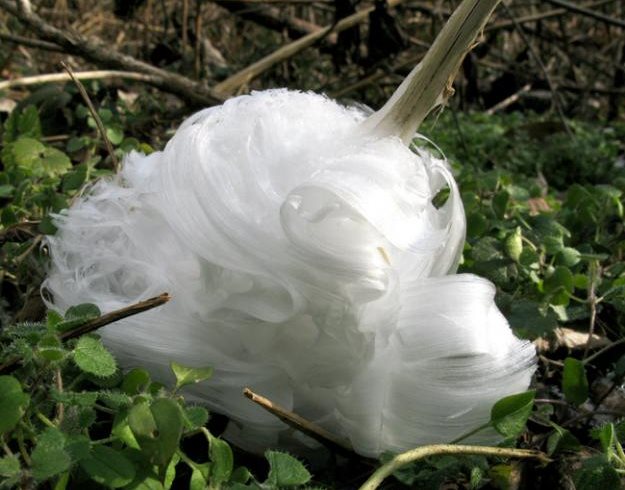Frost Flowers
Frost flowers form when when sap in the stem of a plant expands, casting long, thin cracks along the length of the stem.This winter, when conditions are just right—that is to say, the ground is not frozen but the air is—you might see papery-white blossoms unfurling from long-stemmed plants. These “frost flowers” don't fall into any taxonomic category per se, but their sightings are as enthusiastically documented as any rare orchid (see some pictures users have uploaded to Flickr here). Or, perhaps more appropriately, a rainbow. The phenomenon occurs when sap in the stem of a plant expands, casting long, thin cracks along the length of the stem. Capillary action draws water through the cracks, which freezes upon contact with the air, and the thin layers of ice ribbon like frosting. They're quick to melt, so look for them in the early morning in shaded areas.

Photo by: Dean Morris / Flickr.
Plants that commonly form frost flowers are Verbesina virginica (white crownbeard), Verbesina alternifolia (yellow ironweed), Cunila origanoides (American dittany), and Helianthemum canadense.

Photo by: Dean Morris.

Photo by: Nick Page.

Photo by: MarkInspex / Flickr.
